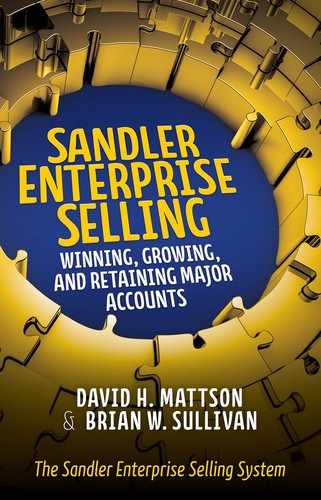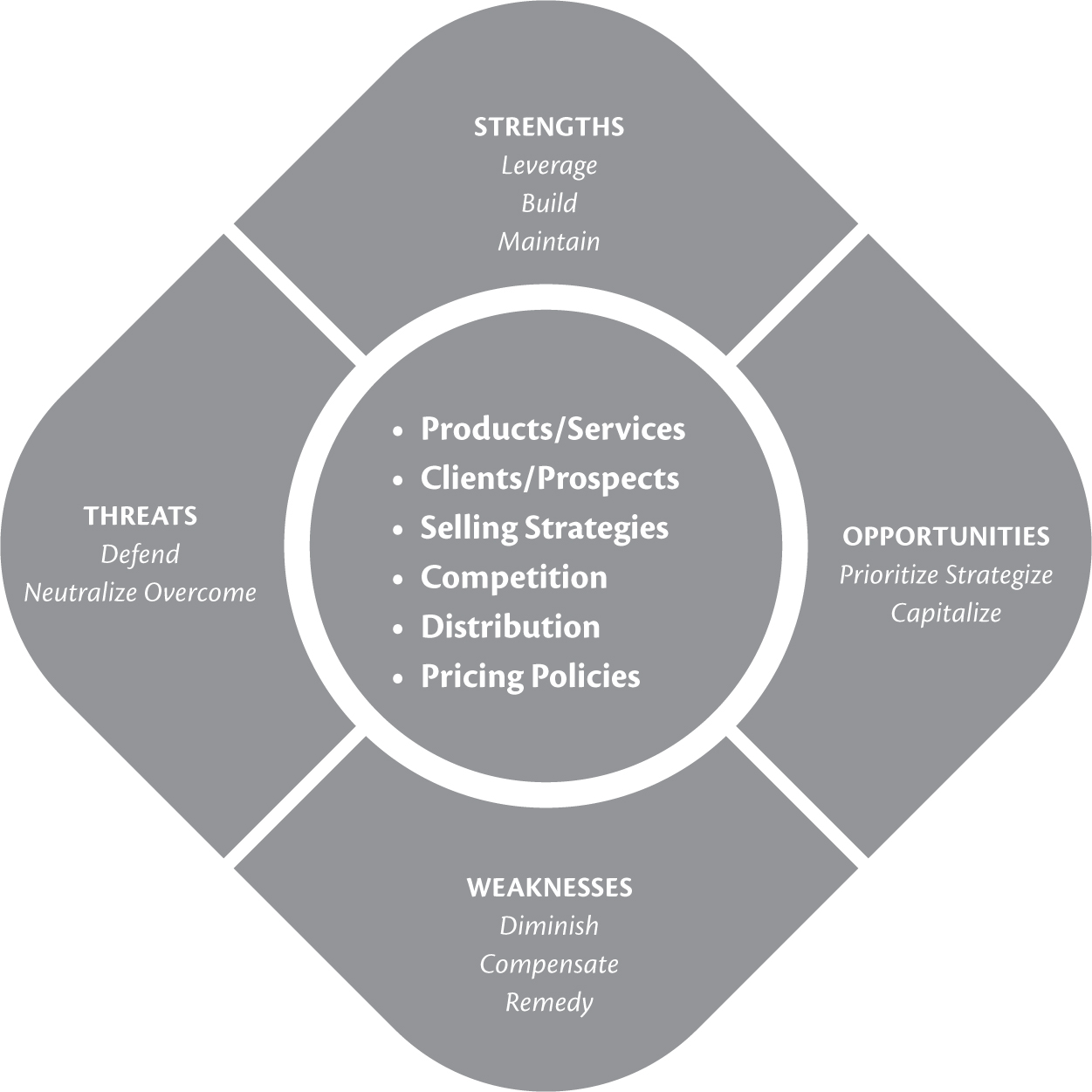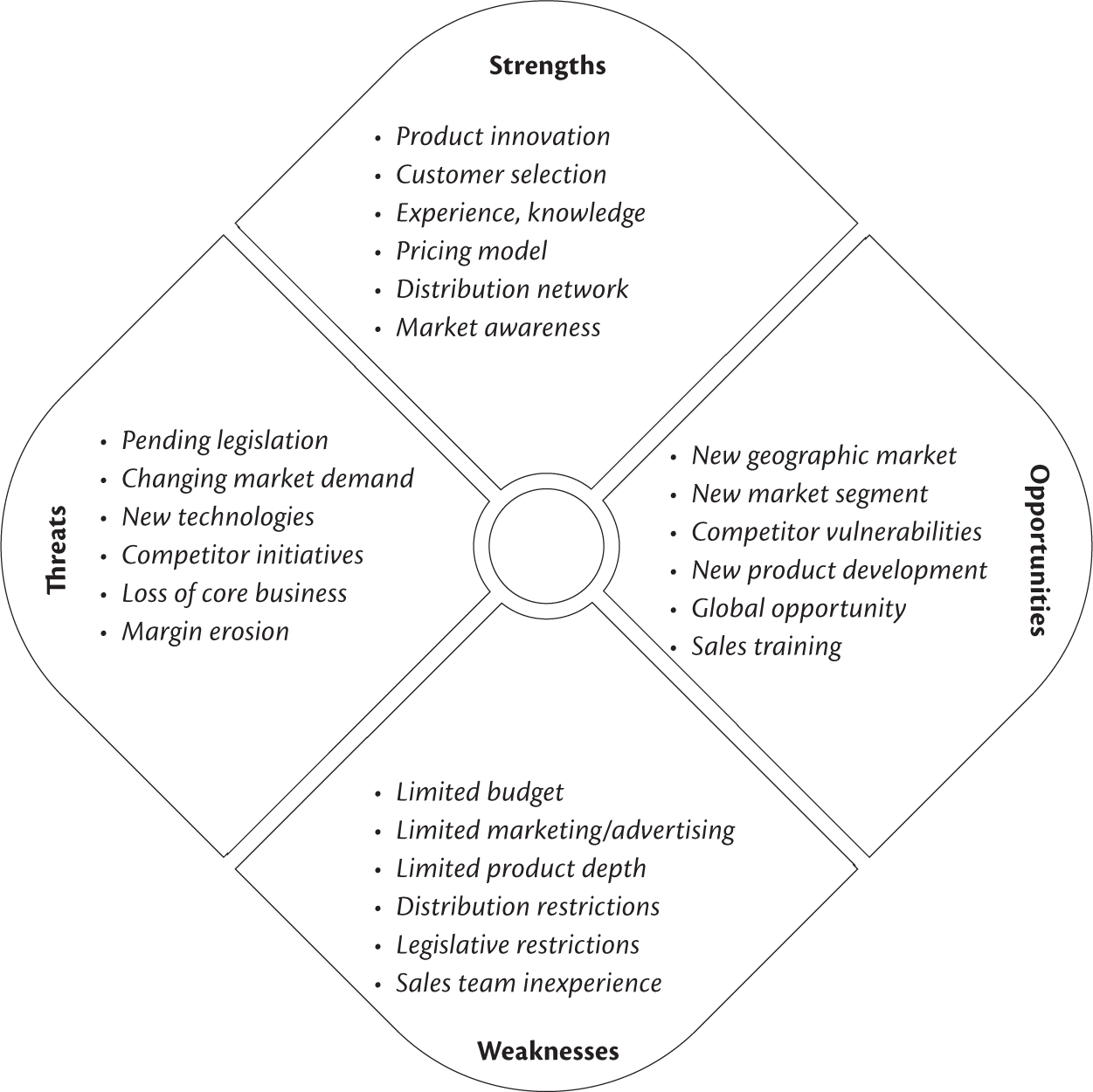CHAPTER 2
Analysis/SWOT Assessment
Proper analysis and assessment positions you to develop effective strategies that strengthen your competitive advantage and increase the likelihood of personal and organizational success. Spending quality time in this disciplined analysis process will provide focus and precision when it is time to evaluate prospective targets.
What Is a SWOT Analysis?
A SWOT analysis, or SWOT matrix, is a structured planning process that evaluates strengths, weaknesses, opportunities, and threats relevant to a project or business venture.
Seller, Know Thyself!
Having established your market understanding as a foundation, you now move to developing a comprehensive understanding of your strengths, weaknesses, opportunities, and threats. As a result, you need to decide what you do well and what you do not do so well. You enhance that knowledge by assessing what external variables will likely affect you positively and negatively. This brings you to the next part of the SES process, which is all about determining what you do well and seeking the most favorable conditions in which to do it.
Teddy Roosevelt once said, “Do what you can, where you are, with what you have.” He could have been offering advice about conducting and acting upon a good SWOT analysis.
Many companies have used the SWOT approach over the years; it’s among the most popular executive planning tools. What’s often forgotten is that the strengths and weaknesses look internally while the opportunities and threats look externally.
The SES version of this tool emphasizes this by placing strengths on the top and weaknesses on the bottom. Take a look at Figure 2.1 now. Notice the action verbs that illustrate strengths, weaknesses, opportunities, and threats.
We want to leverage strengths, prioritize opportunities, diminish weaknesses, and defend against threats. The center highlights some elements that enterprise-selling organizations must classify as a starting point of this exercise. Thus, distribution may be a strength for some and a weakness for others, while competition may be either an opportunity or a threat.
Figure 2.2 is an example of a completed SWOT assessment for territory planning, which is an excellent place to start.
What can you determine from the items that this company has identified as S, W, O, and T? What do you think about this company’s position? What actions could they take to improve their situation?
Build on your strengths, work on your weaknesses; exploit your opportunities, neutralize your threats. Why not complete this territory planning SWOT exercise for your own team, before moving on to chapter 3?


